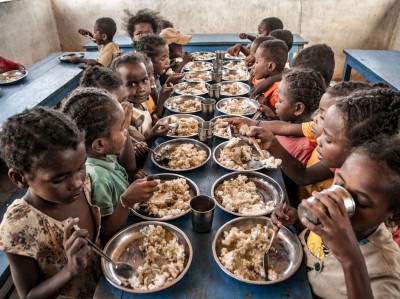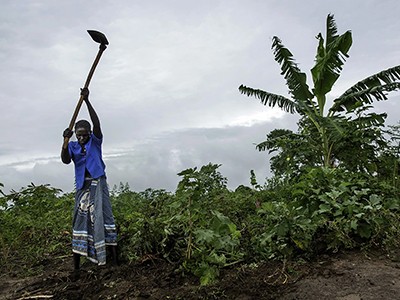In April 2020, I sat outside with a colleague on a deserted campus amid a COVID-19 lockdown. Shelves were emptying in supermarkets across Europe and North America. Panic buying underpinned that, but worker illness and restrictions on mobility and trade were looming: it was not clear how these would create supply-side disruptions. As food-systems scientists, we agreed we simply didn’t have the tools to answer that question.
In recent years, global food security has had shocks from the COVID-19 pandemic, the Russian invasion of Ukraine, extreme weather events and more. My colleagues and I scramble to find convincing answers quickly when development outfits, aid organizations and government think tanks come calling. What would be the impact of COVID-19 mobility restrictions on harvests in sub-Saharan Africa? How would Germany’s move away from Russian gas affect global fertilizer production and use? How would heatwaves change the ability of the poorest people to afford food?
As we talked back in 2020, it was clear to both me and my colleague what we needed: next-generation food-systems models, hooked up to real-world data, that consistently capture patterns of food production, transport, processing and consumption, allowing stress-testing and real-time informed responses to systemic shocks.

Food systems: seven priorities to end hunger and protect the planet
Such representations of physical reality — ‘digital twins’ — already exist in some sectors. They are used in aerospace engineering to prepare for and respond to critical system failures, and in manufacturing to maintain product quality. The European Union is funding an initiative to develop digital twins of Earth systems to tackle climate change and aid protection of nature. Digital twins of food systems will — at least at first — have fewer data to draw on, because the ability to sense food flows varies with location, food type and stage of processing. But with advances in data generation, computing power and artificial intelligence (AI), I am convinced the time for these models is now.
Historically, major food emergencies such as the global price crises of 1972–75 and 2007–08 have triggered leaps in food-system modelling. But efforts have been fragmented. Economists can create complex models of prices and trade for policy analysis, but with limited geospatial resolution. Agronomists have excellent high-resolution renderings of crop production and yield, but these typically stop at the farm gate. What’s missing are the details of how food flows through supply chains — for example, how lentils from Canada make their way to a restaurant in India.
Yet most of what’s needed exists. Satellites can monitor crop production and track how yields respond to weather and other factors. Location and traffic data for major roads, railways, waterways and ports are available in many countries. With GPS, we can tell the speed at which goods travel. We know where people live and can quantify their demand for various foods using purchasing-power data, and we have granular information on international trade volumes for major commodities. Logistics researchers have modelled how food flows from producers to consumers for countries including the United States — models just waiting to be draped over representations of real-world infrastructure.
Putting together these pieces will bring immense benefits, allowing near-real-time assessment of the impact of extreme weather, export restrictions or labour shortages. We will be able to model the effects of multiple simultaneous stressors — disease outbreaks, conflicts or energy shocks — and assess how long it would take to re-route flows to alternative ports, offset losses and buffer shocks.
Technical challenges will need attention. Many maps of processing facilities and the agricultural workforce are incomplete, but machine learning and AI offer opportunities to fill these gaps. Integrating public and private data while ensuring producer and consumer privacy is also difficult, but can be done with current cryptographic tools.

Indigenous knowledge is key to sustainable food systems
Implementing digital twins will be an vast undertaking, and must be done right. On average, poorer nations have less capacity to build and use food-system models: they lack funds, they have less-mature monitoring systems and data infrastructure, and more of their economic activity happens in unrecorded informal markets. Global efforts must counter these inequities and democratize access to models.
Promoting data and model sharing will be key. Digital twins built behind closed doors by industry — particularly large commodity traders and the consultants and insurers that serve them — might not best serve the public interest or the resilience of the food system. Hoarding of privileged information is a real concern given increasing corporate power. Terrorism and security risks are considerable, if in-depth understandings of food-system fragilities are made public or inadequately protected from hacking.
Only through partnership between the public and private sectors, strong governance and clear oversight will the risks be mitigated and the full benefits realized. United Nations bodies could guide this effort, bringing together the organizations equipped to maintain the core components and setting rules for data sharing and governance.
To make digital twins of food systems a success, funding agencies must step beyond their silos and pay for initiatives on the same scale as large physics projects.
The world must stop putting off food-systems data science until emergency strikes. With real-time insights, we could see key fragilities in food systems before it’s too late.
Competing Interests
Table of Contents
The author declares no competing interests.
